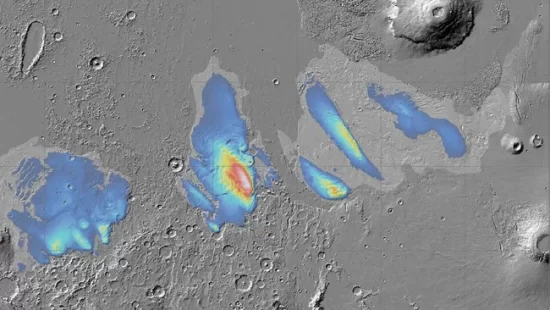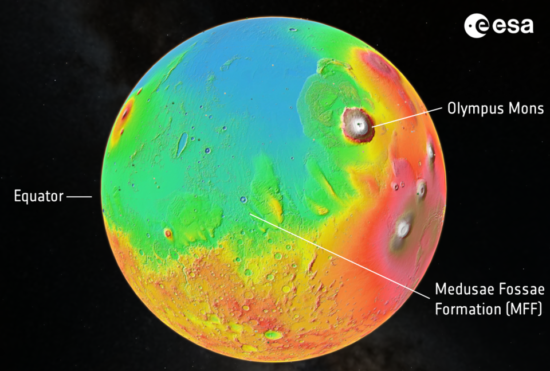
Life on Earth came out of water. When searching for life in the Universe, we look for water and carbon. Where these two coexist, the chances for life seem possible. That’s why finding water, even the frozen type gets exobiologists excited.
Satellites, landers and rovers have all visited Mars. One of these is the European Space Agency’s (ESA) Mars Express which is entering its third decade of service giving us pictures and data from its onboard cameras and sensors. The Mars Express tells the story of the state of water both on and below the surface of the planet.
Its images and data point to the planet’s wetter past showing dried-up riverbeds and deltas. Mars Express has discovered a subsurface ocean of liquid water and large ice deposits beneath the planet’s red and dusty regolith. The latest water discovery is a large body of ice buried at the planet’s equator. The amount is so voluminous, that if it were to melt, the water would fill Earth’s Red Sea.
Mars Express has flown over this equatorial area of the planet in the past and imaged its surface features which ESA scientists now believe indicate the presence of water ice in vast amounts stretching as much as 3.7 kilometres underground. The amount is greater than what can be found at Mars’ two polar ice caps.
The location is the Medusae Fossae Formation (MFF) appearing near the centre of the image of Mars below. States Thomas Watters of the Smithsonian Institution in the United States, “Excitingly, the radar signals match what we’d expect to see from layered ice, and are similar to the signals we see from Mars’s polar caps, which we know to be very ice-rich.”

The MFF features wind-sculpted features, hundreds of kilometres across and several kilometres high. They have been observed as being one of the largest sources of the dust that blows across the planet’s surface.
The ice contained below the surface at the MFF site is interspersed with layers of dust, and topped by a hardened ash and dust coating, hundreds of metres thick. As a water source for future human missions, MFF is highly unlikely. Future colonists will need drilling rigs like those on Earth used to find oil and natural gas if they hope to reach the ice beneath.
What the discovery does reinforce is that Mars was once a water world similar to Earth before the lack of a strong magnetic field, and the solar wind blasted away its thicker atmosphere leaving a tenuous one that exists today. As the planet lost surface water and much of its atmosphere to space, a significant amount of the former turned to ice that was buried over time as the planet’s winds altered the surface topography.
So Mars had water that is now ice. Earth, too, has frozen deposits of water at the poles and high elevations. In Antarctica back in 2018, microbial life was discovered inside a glacier. The microbes were thriving in the deep freeze. Researchers estimate they have been there for as long as 25 million years.
Could microbes survive by hibernating even longer? Again we have evidence on Earth that shows microbes can remain in stasis for as long as 175 million years. They have been found beneath the surface of three continents that at one point were joined as part of the supercontinent Pangaea. So, if microscopic life can survive 175 million years, why not a half billion or even a billion years?
Mars, may not be a dead planet after all.







